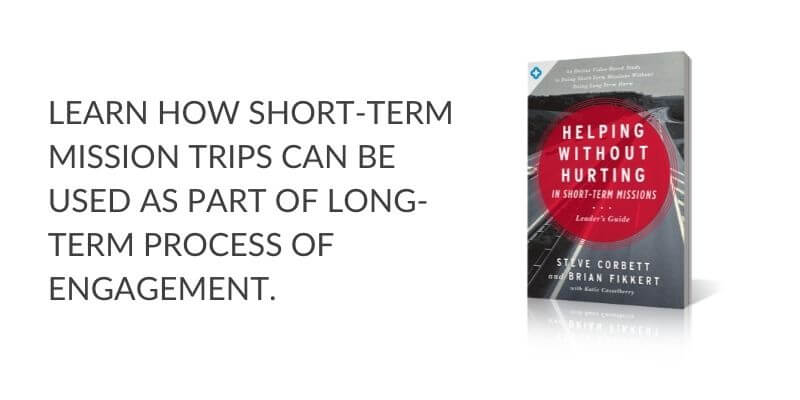Short-Term Missions that Avoid Long-Term Harm—Part 1
Adapted from Helping Without Hurting in Short-Term Missions: Leaders’ Guide, 29-31.
Much international travel, particularly to and from countries with limited healthcare infrastructure, has been on hold for the past 2 years due to the Covid-19 pandemic. As short-term trips begin to become a possibility again, it’s important to remember some best practices for short-term missions that should be followed to protect and encourage the missionaries and local ministries that teams want to support.
What If…
Imagine for a moment that your phone rings. It’s a friend of a friend calling from Thailand. After a few minutes of small talk the caller explains that his church in Thailand would like to send twenty-five people—about half of them under the age of eighteen—to your church for two weeks next summer.
They understand you are ministering in low-income apartment complexes around your church, and they want to come help. The only time they can come is the first two weeks of July, the peak of your church’s ministry season.
“But don’t worry—we are there to help. We’ve prepared a series of skits, crafts, and lessons to present in VBS classes. We will hold them in the apartment complex’s courtyard,” the voice reassures you. “We are bringing gifts for the children to make sure they will attend the VBS, and one of our team members is an electrician who can fix anything in your building while we are there.”
A few details must be worked out. The group will have to be picked up from the nearest major airport—a two-hour trip—and they will need places to stay. And they’ll expect to be fed three meals a day throughout their visit (nothing too far out of what they’re comfortable with—what is a casserole, exactly?). Oh, and one other thing: most of them do not speak English well, if at all. Please arrange translators to accompany them during their stay.
Meanwhile, your church members have spent the past three years gradually developing relationships with the apartment residents and building their trust. These residents are mostly low-income families, and it has taken a long time for them to feel comfortable with your church’s presence in their neighborhood.
While you consider the pros and cons of this offer, the voice continues: “We are just so excited about this opportunity to sacrifice for the sake of the gospel. Our church members are ready and willing to raise $40,000 to come. We are invested in supporting your work, and depending on how things go, we might explore other opportunities to work together.”
You know what that last phrase really means: If we like what we see, we would be willing to give your church ongoing financial support.
Your church could certainly use the money to purchase new AV equipment and refurbish its nursery. But at what cost? Housing, feeding, and supervising twenty-five people with limited English skills? And what about the relationships at the apartment complex? How will the residents respond to a group of people they’ve never met passing out candy and leading VBS sessions?
Do unto others as you would have them do unto you. It sounds so simple. Until it isn’t.
It Doesn’t Have to Be This Way
These types of short-term mission trips present very high opportunity costs. As seen in the hypothetical example above, hosting teams requires incredible amounts of work and coordination from the receiving community and host.
In addition, they also come at a high financial cost. Sociologist Robert Wuthnow estimated—as far back as 2005—that U.S. spending on short-term mission trips totaled more than 1.6 billion dollars. For perspective, at the time, that was enough to pay the annual average wages of roughly 4 million people in material poverty!1
What if there was a better way for congregations and organizations to invest in building connections with ministries around the world, using trips wisely to maximize the value and minimize the disruption to long-term, relational ministry?
The Chalmers Center’s book and video series Helping Without Hurting in Short-Term Missions casts a vision for how short-term trips can be used as part of long-term process of engagement.
In our next post, we’ll look at some examples of trips done well and some practical ways you can pursue short-term work with a long-term goal.



